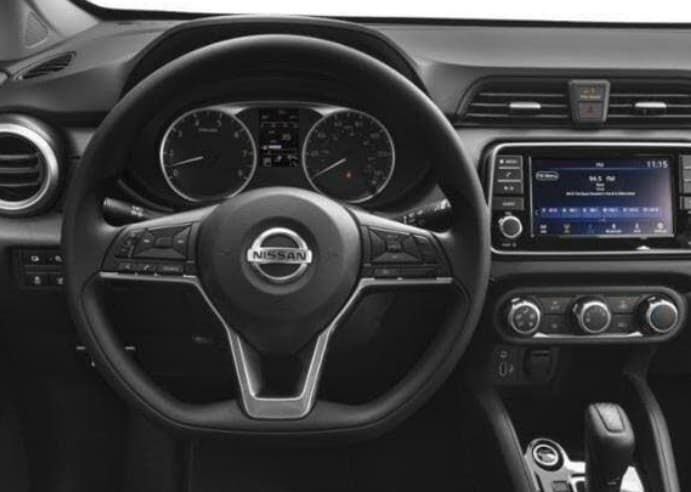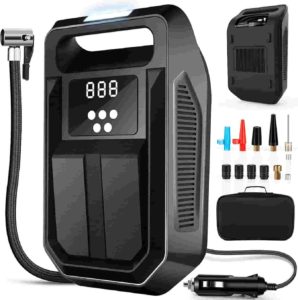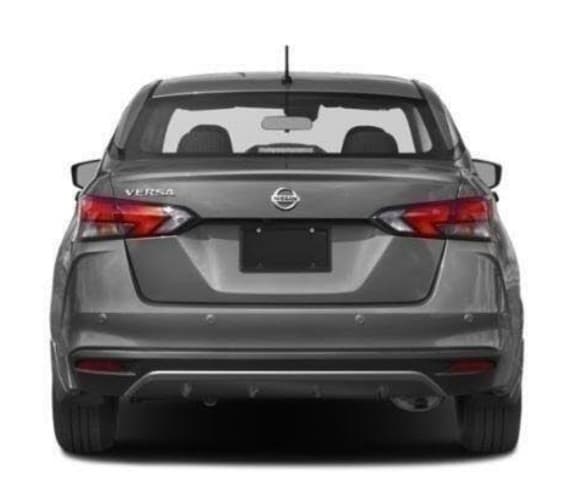Introduction to the Nissan Versa TPMS
Ready to master the art of resetting the Nissan Versa tire pressure light? Buckle up! The Versa doesn’t come with a reset button but boasts an “Easy-Fill Tire Alert” system that guides you with audio-visual cues while you adjust tire pressures. We’ll delve into how the Versa’s sophisticated Tire Pressure Monitoring System (TPMS) works, what triggers the TPMS warning, and how weather affects tire pressure. Plus, we’ll explore the effects of underinflated and overinflated tires and how to keep them in check. Let’s dive in!
Steps to Reset the Nissan Versa Tire Pressure Light
The Nissan Versa does not have a tire pressure reset button. It has an “Easy-Fill Tire Alert” system which provides you with audible and visual signals while adjusting your tire pressures.
Park your Versa in a safe and level place.
Apply the parking brake and put the SUV in Park.
Put the ignition to the ON position. This means engine off, electricity on.
Check and adjust your tire pressures. As you start adding air, the hazard indicators (front and rear blinkers) will start flashing.
Once the correct amount of air has been reached, the horn of your Versa will beep once and the hazard indicators will stop flashing. Be exact, fill your front and rear tires to exactly 33 Psi.
Repeat the same steps for every tire. (if the tire is overinflated by more than 4 Psi, the horn will beep and the hazard indicators will flash 3 times, release some air.)
After adjusting the tire pressure, drive the vehicle at speeds above 16 MPH (25 km/h). The low tire pressure warning light does not automatically turn off when the tire pressure is adjusted. Once the Versa reaches 16 MPH (25 km/h) or more, the light will turn off.
If the low tire pressure warning light flashes for approximately 1 minute and then remains on after you turn the ignition switch to the ON position, the TPMS is not functioning properly. (read more about TPMS malfunction below)
If the light doesn’t go off right away, re-check your tire pressure to make sure they are all at the exact pressure you set them to. If the pressure has decreased, you probably have some sort of leak in that tire.
If your tires are not losing air and the tire light still won’t go out, overfilling your tires by about 10 Psi might wake up your sensors. So, overfill them to about 43 Psi and then drive the Versa for a few minutes. The tire light should reset. Remember: DO NOT leave the tires at this level, release the extra 10 Psi afterwards.
NOTE: Your TPMS will not reset and turn off the low tire pressure warning light until the tire pressure is set to the recommended pressure and the vehicle is driven at speeds above 16 MPH (25 km/h). If you’ve completed these steps and the tire light STILL won’t go out, There is only one of three things that can be the problem. Either have a faulty tire pressure sensor in one of your wheels OR you have a leak OR your receiver module (control unit) is not communicating with your sensors (this is the least of all likely and is rare).
2023 Nissan Versa Tire Pressure
TIRE SIZE | FRONT PSI | REAR PSI |
195/65R15 | 33 | 33 |
205/55R16 | 33 | 33 |
205/50R17 | 33 | 33 |
SPARE TIRE | 60 | 60 |
Tire Settings
Steps to Reset the Tire Maintenance Light
The tire indicator appears when the Versa has driven a preset distance to let you know when it’s time for tire rotations.
Apply the parking brake.
Turn the ignition switch to the ON position, but do not start the engine.
Use the steering wheel switches to select the “Settings” menu on the vehicle information display.
Select “Vehicle Settings“, then select “Maintenance“.
Select “Tire“, then select “Reset“.
Press the OK button to reset the maintenance interval.
How To Change Tire Pressure Units
Press the [OK] button on the steering wheel to enter the main menu.
Scroll to “Settings” using the up or down arrow button on the steering wheel and press [OK].
In the “Settings” menu, scroll to “Vehicle Settings” and press [OK].
In the “Vehicle Settings” menu, scroll to “Tire” and press [OK].
In the “Tire” menu, scroll to “Tire Pressure Unit” and press [OK].
Select the desired unit (PSI, kPa, or bar) and press [OK] to confirm your selection.
How Does the Nissan Versa TPMS Work?
The Tire Pressure Monitoring System (TPMS) in your Nissan Versa is a sophisticated system designed to monitor the air pressure in your tires. Here’s a detailed explanation of how it works:
Sensors: The sensors are the primary data collection points of the TPMS. Each tire (excluding the spare) has a sensor mounted directly on the end of each valve stem inside the tire. These sensors are battery-powered and are designed to last for several years under normal conditions. Each sensor measures the air pressure inside its respective tire. It does this using a pressure transducer, a device that converts the physical pressure inside the tire into an electrical signal. This signal is then processed by the sensor’s internal circuitry. Once the sensor has collected and processed the data, it transmits it as a radio frequency (RF) signal. (using either 315 Mhz or 433 Mhz) This signal includes a unique identifier for each sensor, which allows the TPMS control unit to know which tire each set of data is coming from.
Receiver and Control Unit: The vehicle is equipped with a receiver that picks up the RF signals from each sensor. This receiver is part of the TPMS control unit, which is the brain of the system. The control unit interprets the data from each sensor, determining whether the pressure within each tire is within the acceptable range set by Nissan. (anywhere from 15%-25% below 32 Psi will set off the light)
Dashboard Indicator: If the control unit determines that the pressure in one or more tires is too low or too high, it will illuminate the TPMS warning light on the Versa’s dashboard. This is a signal to the driver that one or more tires may need attention. The light is a yellow exclamation point inside a tire symbol.
Tire Pressure Information Display: In addition to the warning light, the Nissan Versa also provides a tire pressure information display that shows the pressure in each tire. This display can be accessed through the vehicle’s information display, which is controlled using the buttons on the steering wheel. This allows you to see exactly which tire is showing an abnormal pressure and what the pressure currently is.
What is the TPMS Malfunction Indicator?
As we just mentioned, the Nissan Versa has a malfunction indicator to alert you when something is wrong with the system itself. The indicator uses the same yellow exclamation point as the low tire pressure light. The difference is that, if there is a problem with the system, the light will flash for about 1 minute before staying on. This flashing or blinking will happen every time you start your Versa until the issue is resolved. When your tire light is flashing your Versa will not be able to give you accurate pressure readings. Basically, a blinking tire pressure light means there is a malfunction within the TPMS itself, rather than an air pressure issue. This is usually due to a faulty pressure sensor in one of your tires (a dead battery) or driving with the spare tire. (if the spare doesn’t have a sensor in it) To figure out which sensor is malfunctioning or faulty, use a TPMS diagnostic tool and scan each sensor for diagnostic information or bring your car to a professional.
What Causes the TPMS to Malfunction?
Using wheels or tires not from Nissan or replacing wheels or tires without sensors.
Devices that operate on comparable radio frequencies can potentially disrupt the functioning of the TPMS. This interference can originate from a variety of sources, such as radios, two-way communication devices like walkie talkies, or even the security systems of a store you’re driving past.
If your Versa has significantly tinted windows, it may potentially interfere with the radio signal transmission occurring between the TPMS sensors and the receiver.
Driving with your spare tire.
If there is substantial amounts of snow or ice accumulation on or surrounding the tire valves.
If the tire pressure is extremely high.
Driving at extremely high speeds for an extended period of time.
If new tire pressure sensors are installed without registering the new sensor identification codes with the Versa’s receiver module/ECU. (You need a TPMS diagnostic tool to do this)
What Will Causes the Tire Light to Turn On?
Weather & temperature changes: A drop in ambient temperature can cause tire pressure to decrease, triggering the warning light. This is very common in fall and winter seasons.
Tire puncture or leak: An object with a sharp edge or roadway debris such as a nail or screw could pierce a tire, leading to a loss of air that will subsequently trigger the warning light.
Faulty tire pressure sensor: Damaged or malfunctioning sensors may provide inaccurate readings, resulting in a false alert. The only way to determine which sensor is faulty is to scan each sensor with a TPMS diagnostic tool.
Valve stem issues: A faulty or leaking valve stem can result in a slow loss of pressure, ultimately causing the tire pressure light to illuminate. There are available kits designed to replace the rubber gasket that usually goes bad.
Tire damage: Impact from potholes or hitting a curb can cause structural damage like tire bubbles, leading to pressure loss.
Sensor battery life: TPMS sensors are battery-powered, and over time, batteries die. (they usually last anywhere from 5-10 years) This will cause the tire pressure light to turn on. Again, you must use a diagnostic tool to determine which sensor is dead or dying.
Recent tire rotation or replacement: If you have recently rotated or replaced your tires, the TPMS may need recalibration to avoid false alerts. Sometimes the vehicle’s computer may think the front tires are in the rear and rear in the front after a rotation.
Wheel issues: Cracked, corroded or damaged wheels can lead to air leaks and pressure loss. This is very common with low profile tires.
Altitude changes: Climbing or descending in elevation can affect tire pressure and trigger the TPMS warning. An additional 1.5 Psi per Kilometer above sea level is recommended.
Natural pressure loss: Over time, tires experience a decrease in air pressure due to fluctuations in temperature and permeation. Tires that sit for extended periods will develop dry rot, eventually leading to pressure loss.
Software Updates: Occasionally Nissan may put out a software update for the Versa’s TPMS.
Snow Tires: If you have a separate pair of wheels for your snow tires, you can either transfer the sensors from your summer wheels or acquire an additional set of 4 sensors for the second pair of wheels. However, if you are using the same wheels for both sets of tires, don’t worry about this.
What Happens When Tires are Underinflated or Overinflated?
The underinflation and overinflation of tires can significantly influence the safety and performance of your Nissan Versa. Here are some crucial effects to bear in mind:
Effects of Underinflated Tires:
Leads to decreased fuel efficiency due to increased rolling resistance.
Causes premature and uneven tire wear, particularly along the outer edges.
Results in compromised vehicle handling, making the car feel sluggish and unresponsive.
Increases susceptibility to tire damage from road hazards like potholes.
Lengthens braking distance, potentially leading to accidents.
Effects of Overinflated Tires:
Accelerates tire wear, especially in the center of the tire.
Negatively affects vehicle handling, making the car suspension feel stiff.
Heightens the risk of tire damage from sharp objects and increases the likelihood of blowouts.
Results in a harsh and uncomfortable ride as the tires are harder and are less able to absorb road imperfections.
Increases the risk of hydroplaning in wet conditions due to less tire contact with the road surface.
To prevent any of this from happening, we recommend manually checking your tire pressure at least once a month and before taking any trips.
Does Weather Affect Tire Pressure?
The weather can have a substantial impact on the tire pressure in your Nissan Versa. When the temperature decreases your tire pressure will also drop. Conversely, when the temperature increases your tire pressure will rise, potentially leading to overinflation. So, when there are significant changes in weather be sure to check and adjust your tire pressure just to be safe! For every 10-degree Fahrenheit drop in temperature your tire pressure decreases by about 1 PSI.
How to Adjust Tire Pressure
Make sure the tires are cold.
Remove the valve cap from the tire.
Press the tip of the tire pressure gauge onto the valve and read the pressure.
If the tire pressure is below the recommended level (33 Psi), fill the tire with air until 33 Psi is reached. If the tire pressure is above 33 Psi, release air until it’s at exactly 33 Psi. (Press the metal stem in the center of the tire valve. You can use any object like a screwdriver to do this. Be gentle.)
After adjusting the tire pressure, don’t forget to put the valve caps back on to prevent leaks and keep dirt and moisture out.
Repeat this process for each tire, including the spare if applicable.
When's the Best Time to Adjust Tire Pressure?
To get a correct and accurate tire pressure reading on your Nissan Versa, check it when the car has been sitting for a while. This is known as checking the “cold pressure” after the car hasn’t moved for about three hours or more. Driving heats up your tires, causing the air inside to expand and show a higher pressure reading. So, don’t adjust your tire pressure right after driving or your tires will end up overinflated!
Conclusion
And there you have it! You’re now well-equipped to handle your Nissan Versa’s tire pressure light like a pro. From understanding the intricacies of the TPMS to resetting the tire pressure light, changing tire pressure units, and even troubleshooting common issues, you’ve got it all under your belt. Remember, maintaining the correct tire pressure is not just about turning off a dashboard light – it’s about ensuring your Versa’s performance, fuel efficiency, and most importantly, your safety on the road. So, keep these tips handy, and happy driving! Everything in this article is applicable to all Nissan Versa models and trims. This includes the Versa S, Versa SV, Versa SR.
Please note that this blog post contains Amazon affiliate links. This means that if you make a purchase through one of these links, we at TPMSRESET.com may earn a small commission at no extra cost to you. We only recommend products that we personally use and believe in. Thank you for supporting us.





